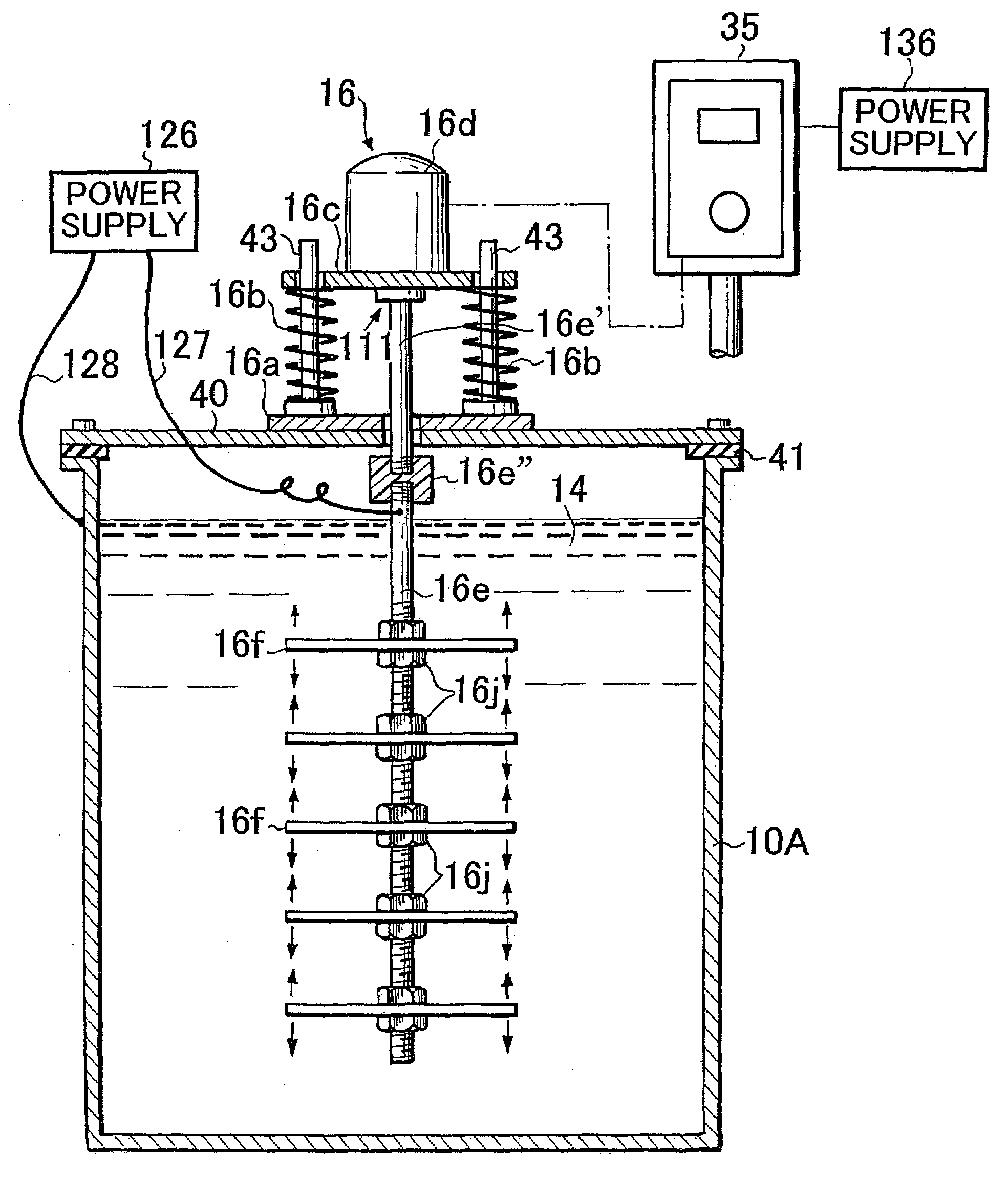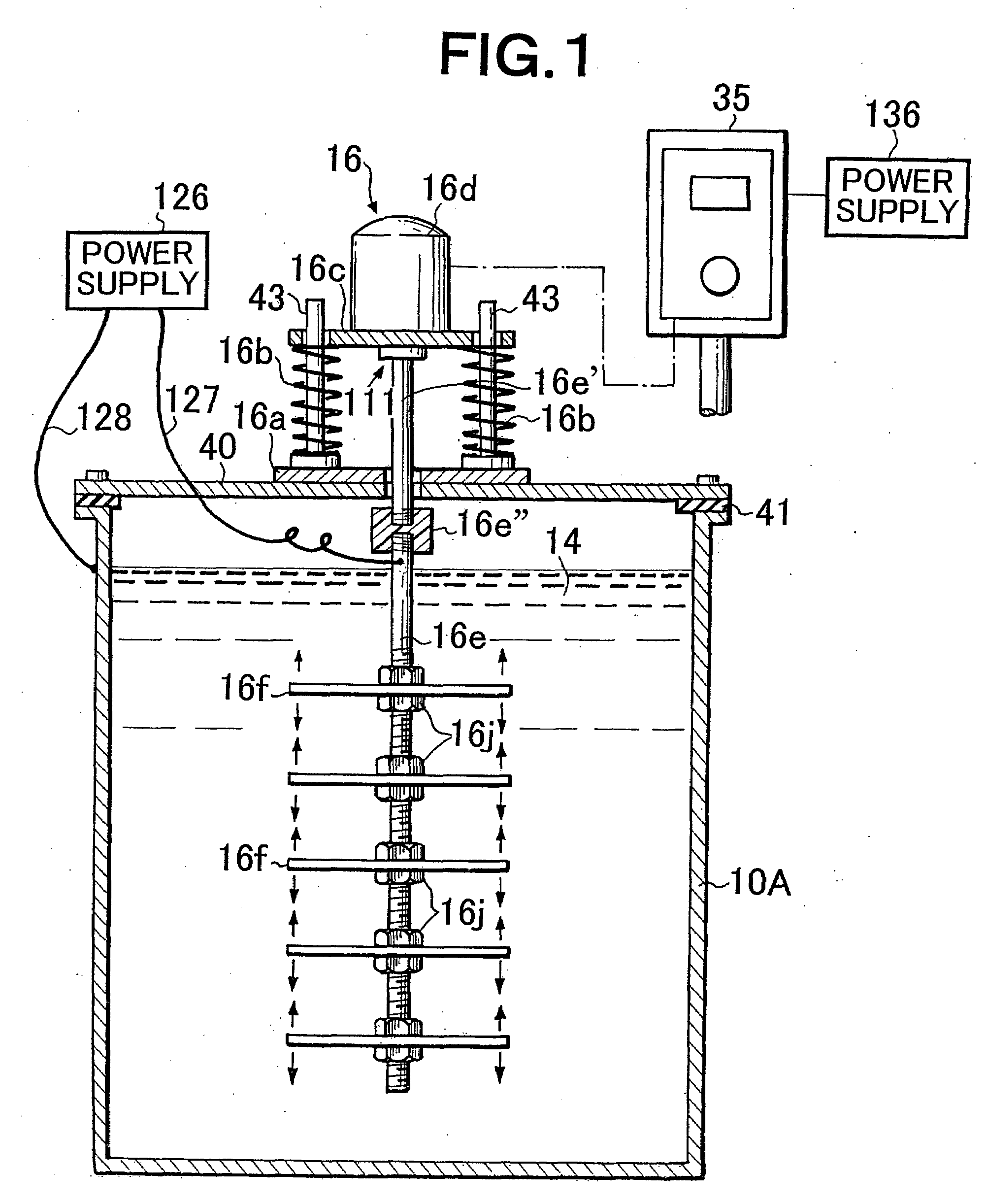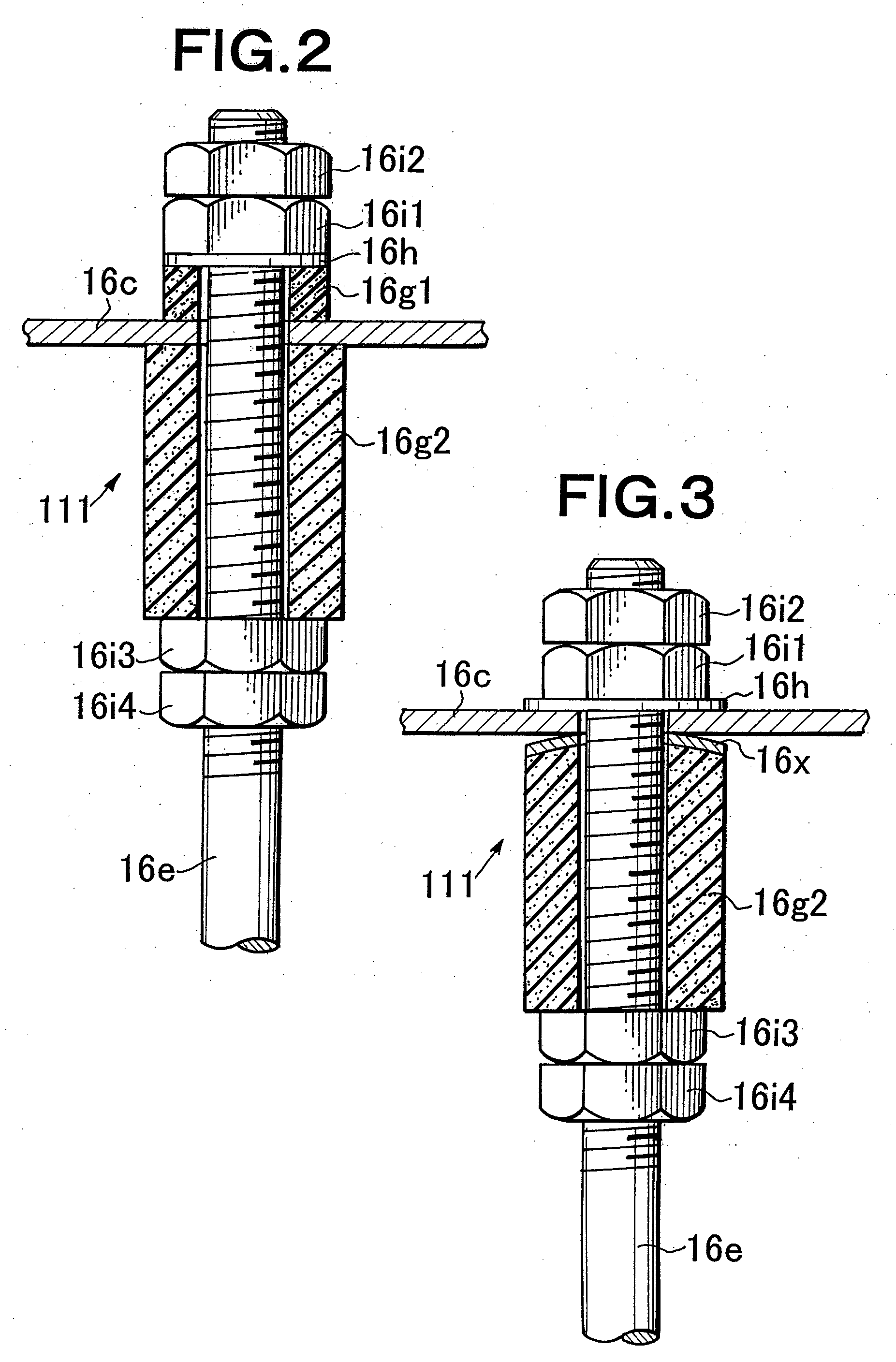Vibratingly Stirring Apparatus, and Device and Method for Processing Using the Stirring Apparatus
a technology of stirring apparatus and stirring chamber, which is applied in the direction of sealing device, electrolysis component, transportation and packaging, etc., can solve the problems of inapplicability of method and limited electric current density to only about 5 to 6 a/dm, and achieve high-quality products and improve production efficiency
- Summary
- Abstract
- Description
- Claims
- Application Information
AI Technical Summary
Benefits of technology
Problems solved by technology
Method used
Image
Examples
first embodiment
Milk Sterilizer
[0212]Milk was sterilized using the liquid treatment apparatus described for FIG. 34. The processing conditions were as follows.
[0213]Insulated vibration-stirring apparatus: is installed on both sides of the inner tank member 61 of FIG. 34 as described in FIG. 16 and FIG. 17.
Vibration motor: 200 volts (3-phase)×150 watts, vibration frequency: 42 Hertz
Vibrating vane: Cathode side is titanium. Anode side is platinum plating on the titanium surface.
Processing power supply voltage: 4.5 volts
Processing current: 3.5 amperes
Treatment tank: W300×L700×H350 millimeters
Processing fluid: Using a tryptiquese growth medium the intestinal bacteria (colon bacillus) was cultured for 24 hours at 35° C. After propagation, a turbid bacteria medium of 60 liters of milk within the treatment tank “contained 22,000 colon bacillus per liter of milk”.
[0214]After irradiating with ultraviolet light, conducting power and vibration-stirring (agitation), the results as shown in the following table ...
second embodiment
Electrodeposition Painting
[0216]Cation electrodeposition coating of automotive parts was performed using the insulated vibration-stirring apparatus described in FIG. 21 and FIG. 22, as the insulated vibration-stirring apparatus 16 for the surface treatment apparatus (electrodeposition coating device) described in FIG. 23.
[0217]A tank made of steel with an inner lining of plastic was used as the treatment tank (electrodeposition tank) 10A. A processing liquid 14 (liquefied electrodeposition coating) consisting of synthetic fatty soluble emulsion, pigment paste, and water was filled into this tank A negative electrode hanger was affixed to the electrically insulated suspension conveyor 80 in the tank, The automotive part (processing product ART) was hung from it and used as the negative electrode. As shown in FIG. 21 and FIG. 22, the insulated vibration-stirring apparatus contains two vibrating rods and, a vibrating vane of titanium plated with platinum (thickness 0.5 mm, D1=250 mm an...
third embodiment
Electrodeposition Coating
[0223]The insulated vibration-stirring apparatus of the third embodiment does not use electrode support vanes. The vibrating vane have a thickness of 0.5 millimeters, D1=250 mm and D2=170 mm as shown in FIG. 12 and a tilt angle α=15 degrees as shown in FIG. 11. A titanium lath web electrode plate (electrode member) with platinum plating was inserted between all insulated vibration-stirring apparatus and automotive part as described using FIG. 26. These electrode plates were anodes of the same polarity utilizing vibrating rods and vibrating vanes of the vibration-stirring apparatus. The gap between the tip of the vibrating vane and the lath web electrode plate was 50 millimeters. The minimum distance between the lath web electrode plate and automotive part was 100 millimeters. In other words, the positional relationship of the insulated vibration-stirring apparatus, the lath web electrode plate and the processed part was the same as shown in FIG. 28.
[0224]Ele...
PUM
| Property | Measurement | Unit |
|---|---|---|
| frequency | aaaaa | aaaaa |
| current density | aaaaa | aaaaa |
| thickness | aaaaa | aaaaa |
Abstract
Description
Claims
Application Information
 Login to View More
Login to View More - R&D
- Intellectual Property
- Life Sciences
- Materials
- Tech Scout
- Unparalleled Data Quality
- Higher Quality Content
- 60% Fewer Hallucinations
Browse by: Latest US Patents, China's latest patents, Technical Efficacy Thesaurus, Application Domain, Technology Topic, Popular Technical Reports.
© 2025 PatSnap. All rights reserved.Legal|Privacy policy|Modern Slavery Act Transparency Statement|Sitemap|About US| Contact US: help@patsnap.com



